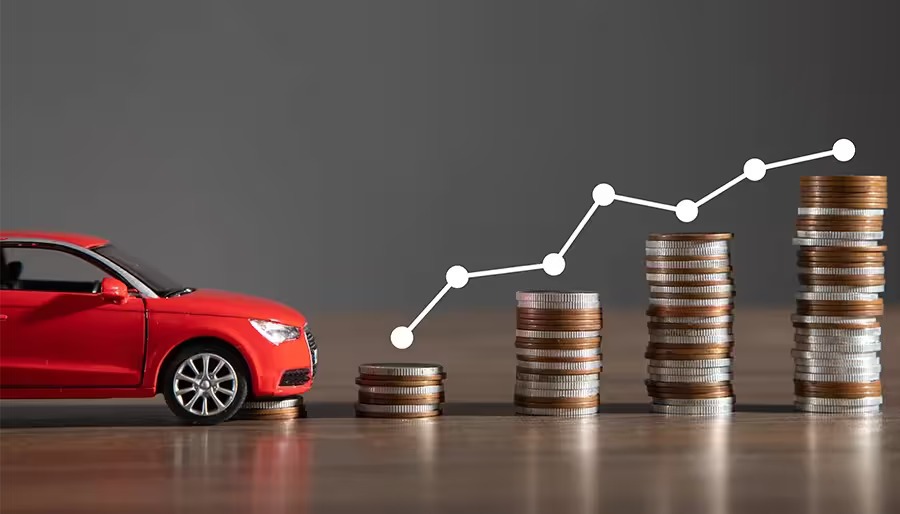Your car insurance premium isn’t set by random chance, various measurable factors determine whether you will pay more or less to protect your vehicle. From your driving history to where you park at night, insurers assess dozens of variables when calculating the cost. Knowing the various aspects influencing the insurance premium allows you to make informed decisions when choosing a policy. This could help significantly reduce your expenses.
Introduction
Protecting your vehicle with adequate insurance is essential to abide by the law and save your finances. When considering the cost of insuring, many drivers wonder why their premiums differ so drastically from others. When buying car insurance online, understanding what drives the cost higher or lower puts you in control of your policy expenses. With a suitable approach, you can potentially lower your premium while maintaining the essential protection required.
Factors That Influence Car Insurance Cost
Insurers assess various factors to determine the insurance premium for a policyholder. These include the following:
-
Driver-Related Factors
The following driver-related characteristics help insurers predict how likely you are to file claims and the premiums are set accordingly.
- Age and driving experience: Younger or newly licensed drivers often pay higher premiums because their lack of experience is seen as a risk for accidents. Mature drivers with several years of safe driving usually enjoy lower rates.
- Claims history: A history of frequent claims can indicate higher risk, prompting insurers to charge more. A clean claims record may help you secure lower premiums or a no-claim bonus.
- Driving record: Traffic violations, speeding tickets, or DUI charges reflect risky driving behaviour and can significantly increase insurance premiums. A clean record shows responsibility and lowers risk.
- Driver’s occupation: Some insurers offer occupation-based discounts since individuals in certain professions are considered safe drivers. Jobs involving less travel or regular working hours might be seen as lower risk.
-
Vehicle Factors
Your car’s various aspects play a major role in determining your insurance expenses.
- Vehicle value: More expensive cars typically cost more to insure because repairs or replacement will require larger payouts from the insurance company.
- Safety features: Cars that are fitted with the latest safety technology are often eligible for discounts as they reduce accident likelihood and severity of injuries.
- Theft rates: Models frequently targeted by thieves generally come with higher premiums because of the increased risk of theft-related claims.
- Repair costs: Vehicles with specialised parts or complex systems that make repairs expensive will usually have higher insurance premiums.
- Engine power: High-performance vehicles with powerful engines typically cost more to insure because statistically, they are more involved in accidents.
-
Geographic Factors
The region where you reside and commonly drive affects your insurance rates in several important ways that reflect local risk patterns.
- Areas with a higher population density: These places are likely to see more accidents and claims. Congested urban environments present more opportunities for collisions than rural settings. This can result in higher car insurance premiums for residents in such areas.
- Regions that experience severe weather: Vehicles in areas with frequent floods or hailstorms can get easily damaged or suffer total loss. If you live in such a place, your premiums might reflect this elevated risk.
-
Coverage Choices
The protection level you select directly influences what you pay for car insurance.
- Comprehensive coverage: It increases the premium but protects against a wide range of incidents.
- Collision coverage: This pays for damages to your car in case of an accident, regardless of who is at fault. It’s especially valuable for new or high-value vehicles, but it significantly adds to your premium.
- Deductible: This is what you pay out of pocket before your insurer contributes to a claim. This amount inversely affects your premium – higher deductibles mean lower payments.
- Riders: Add-ons you select like zero depreciation, engine protection, roadside assistance, etc. increase the total premium. These riders enhance your policy’s scope but come at an added cost.
-
Usage Pattern
How you use your vehicle matters to insurers when determining your premium costs. Your driving habits provide valuable insights into your risk profile.
- Annual mileage: Drivers who are spending increased time on the road face greater exposure to accident risks, typically resulting in higher insurance premiums.
- Commuting distance: Longer daily commutes through congested traffic increase your accident probability, often leading to higher insurance costs.
- Vehicle storage: Cars kept in secure garages typically qualify for lower premiums than those parked on streets due to reduced theft risk.
- Primary driver status: Having multiple drivers, especially inexperienced ones, listed on your policy usually increases your overall premium costs.
- Business usage: Using your personal vehicle for business purposes generally increases your premium as commercial driving often involves more time on roads, hence perceived accident risks.
-
Insurance History
When you change insurers, your new insurance provider analyses you based on your previous interactions with other insurance companies. The pricing decisions are based on this historical viewpoint. They look for your payment history. Payment delays could indicate that you are not trustworthy financially and hence, new insurers may offer you higher rates. Maintaining continuous coverage demonstrates responsibility and often earns you better rates.
Strategies to Reduce Your Insurance Costs
There are various steps you can take to lower your insurance expenses without sacrificing necessary protection. Consider these approaches to find meaningful savings.
- Improve your driving: Taking defensive driving courses demonstrates your commitment to safety and frequently qualifies you for discounts on your premium.
- Install security devices: Adding approved anti-theft systems or tracking devices to your vehicle reduces theft risk and often earns you security-related premium discounts.
- Review coverage annually: Regular policy reviews help identify coverage you no longer need, such as comprehensive protection on older vehicles with diminished market value. This will help manage the insurance cost.
- Shop around periodically: Insurance markets remain competitive, and comparing rates every renewal period ensures you are not paying more than necessary for equivalent coverage.
Final Thoughts
Knowing about the factors that impact car insurance costs empowers you to make informed decisions about your coverage. Once you identify which factors are within your control, you can make some adjustments to lower the insurance premium without sacrificing coverage. Keep in mind that insurers treat these features differently, which makes it worthwhile to compare options using a car insurance calculator before committing to a policy. Small changes in your circumstances or choices can sometimes yield substantial savings over time.
Disclaimer: The above information is for illustrative purpose only. For more details, please refer to policy wordings and prospectus before concluding the sales.





























